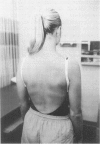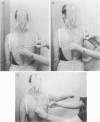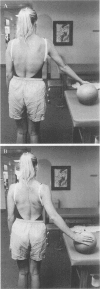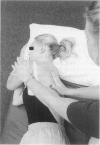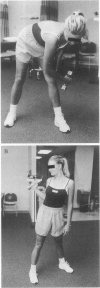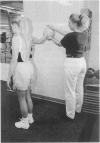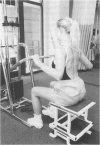Abstract
Objective:
To present a clinical understanding of the role the scapula plays in the mechanics of shoulder function and specialized techniques for the rehabilitation of injuries around the shoulder girdle.
Background:
The scapular musculature is often neglected in the evaluation and treatment of shoulder injuries. This lack of attention often degenerates into the incomplete evaluation and rehabilitation of scapular dysfunction. Dysfunction or weakness of the scapular stabilizers often results in altered biomechanics of the shoulder girdle. The altered biomechanics can result in (1) abnormal stresses to the anterior capsular structures, (2) the increased possibility of rotator cuff compression, and (3) decreased performance.
Description:
We review the anatomy and role of the scapula, the pathomechanics of injury and dysfunction, and the evaluation and rehabilitation of the scapula.
Clinical Advantage:
Knowledge of how the scapular muscles influence function at the shoulder builds a strong foundation for the clinician to develop rehabilitation programs for the shoulder.
Keywords: scapular rehabilitation, shoulder rehabilitation, impingement syndrome, rotator cuff
Full text
PDF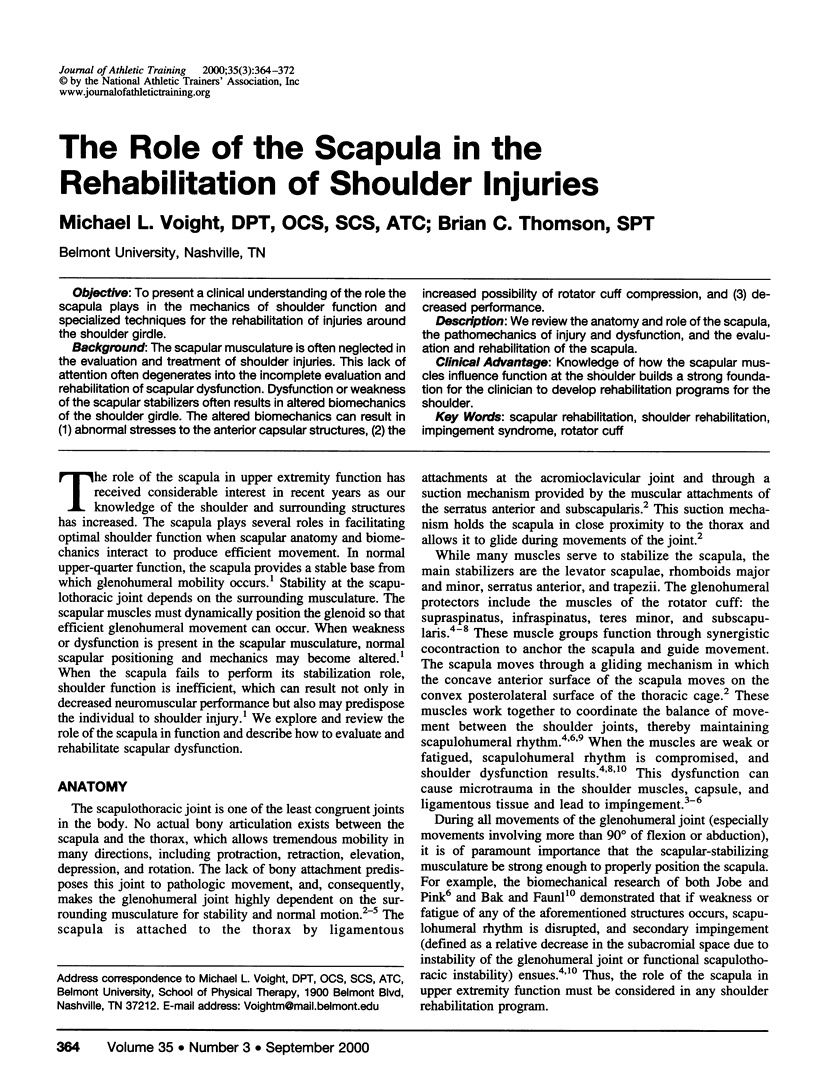
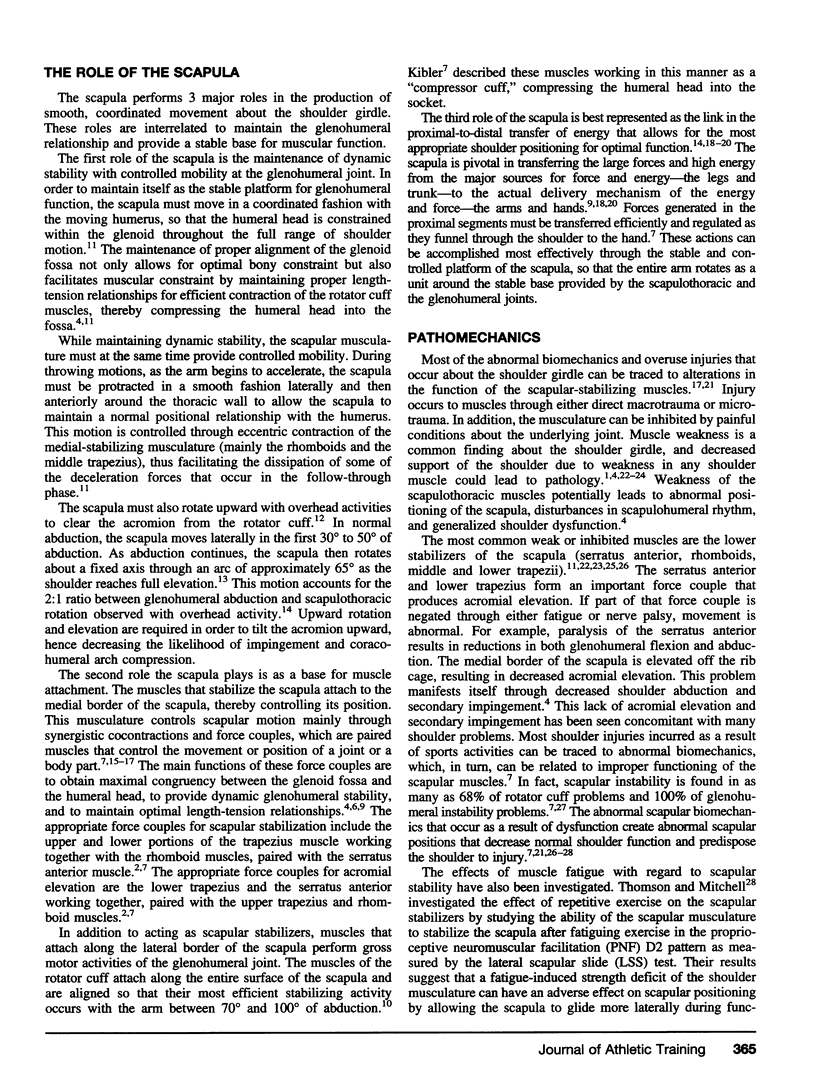
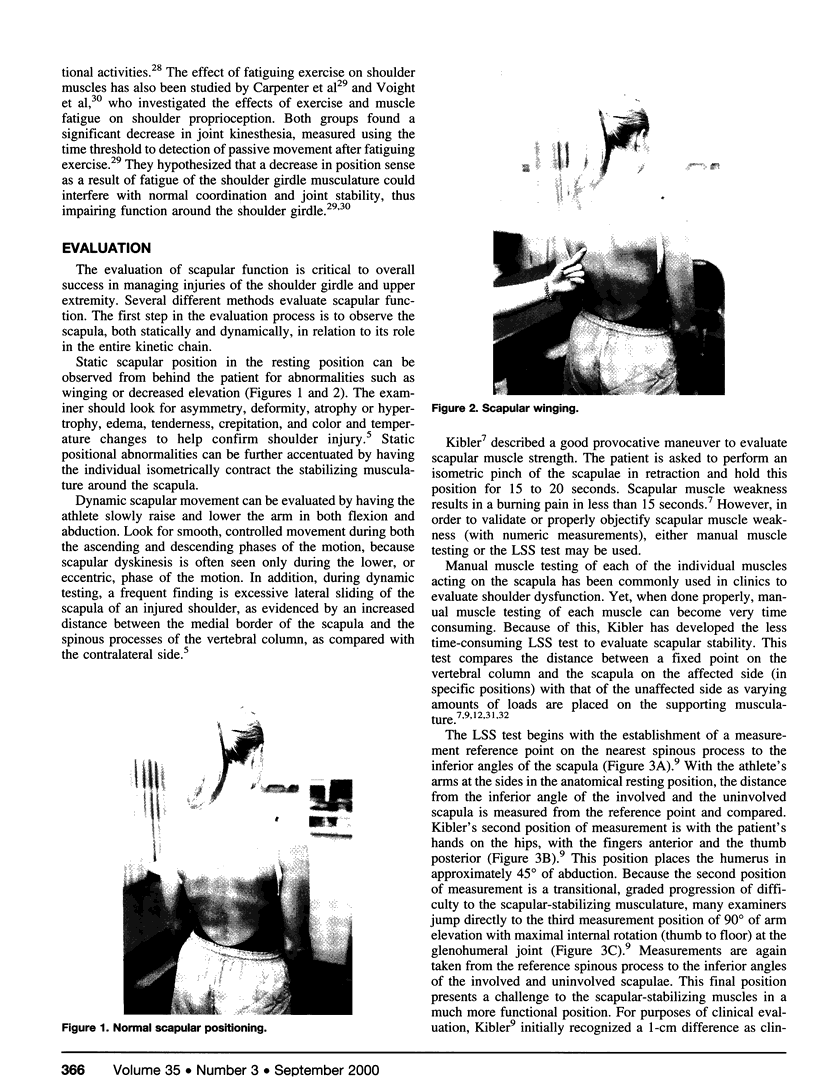
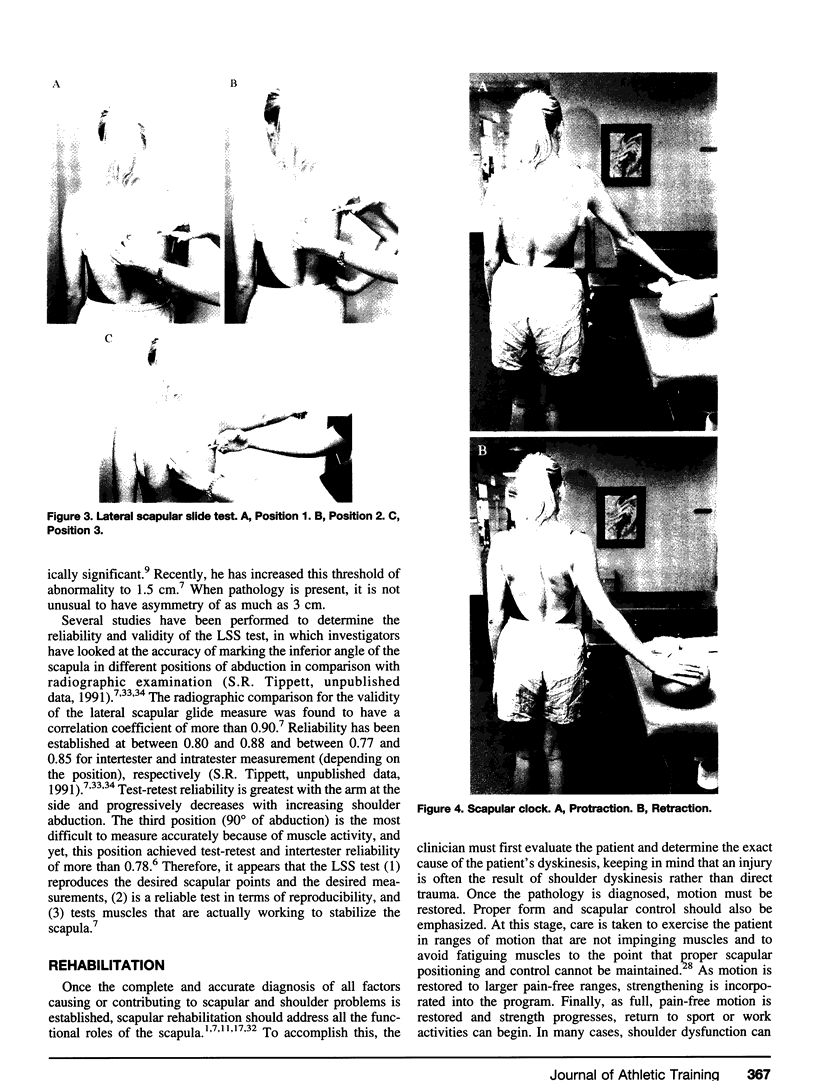
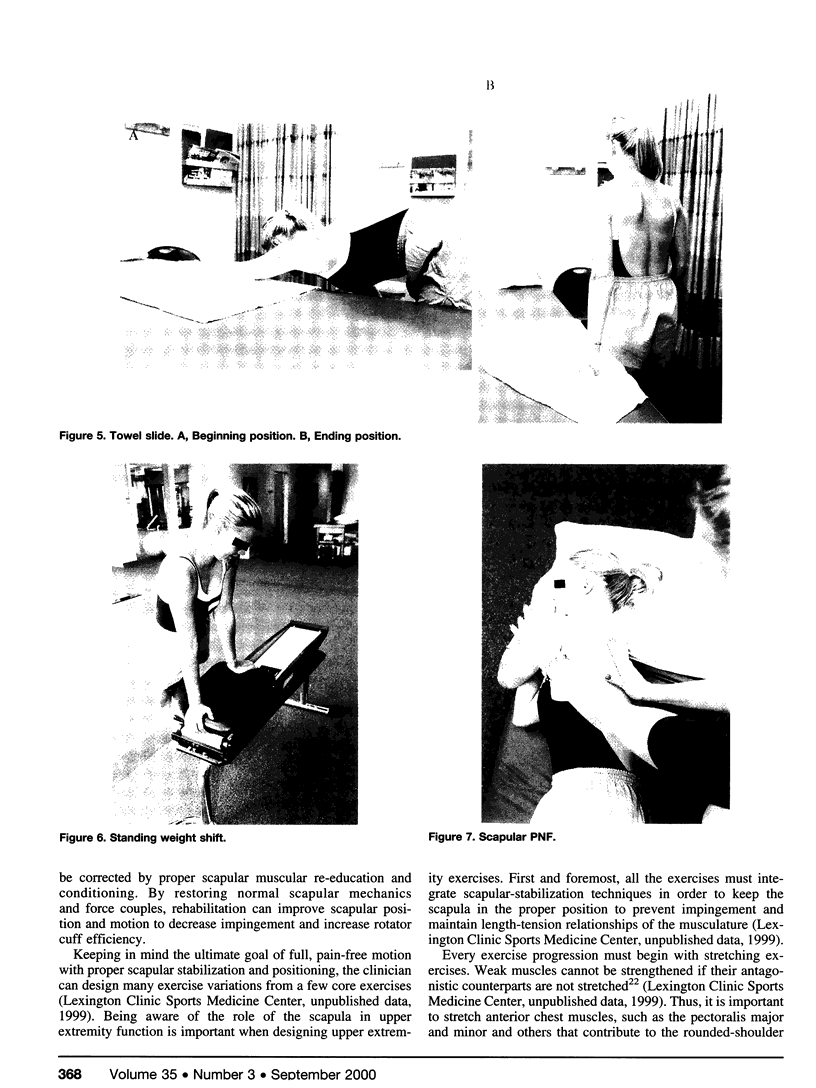
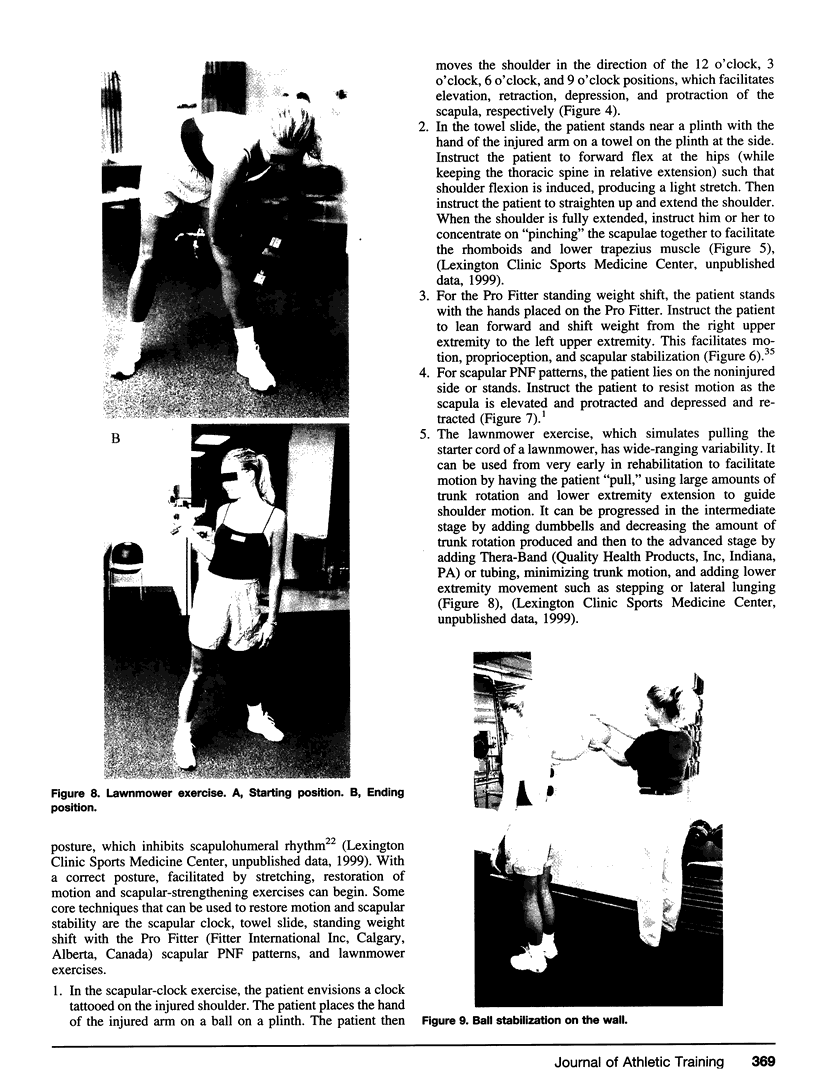
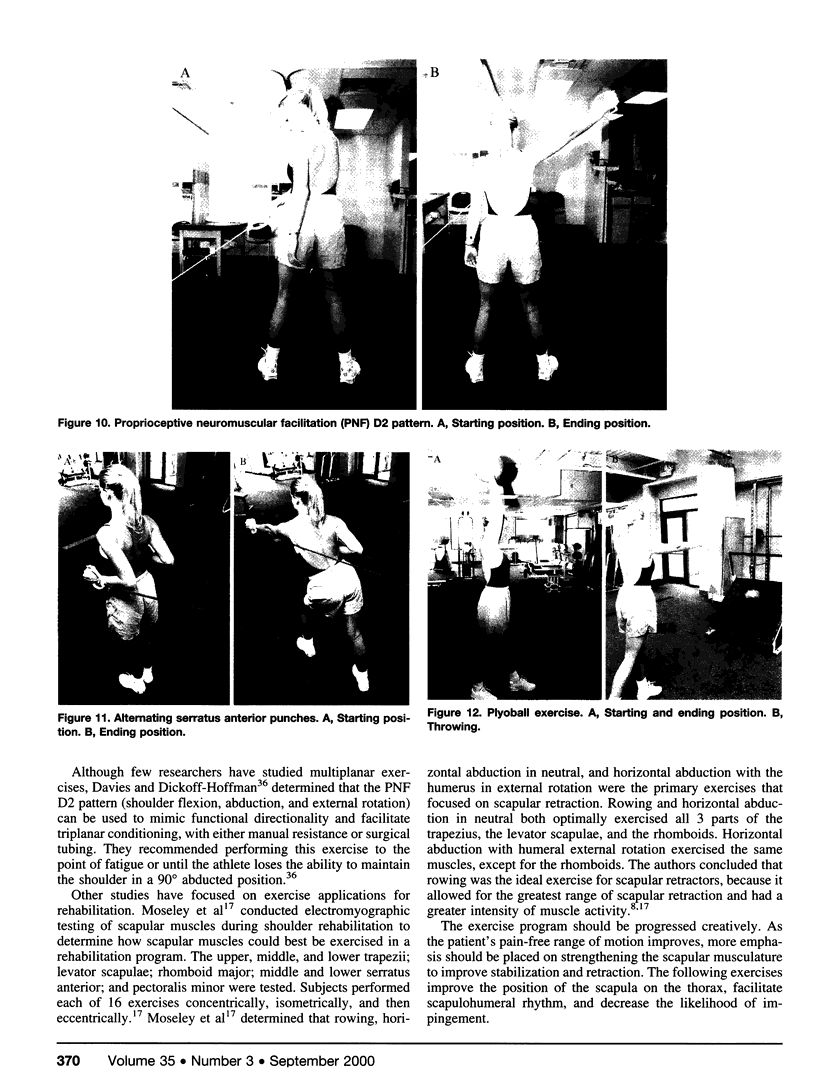
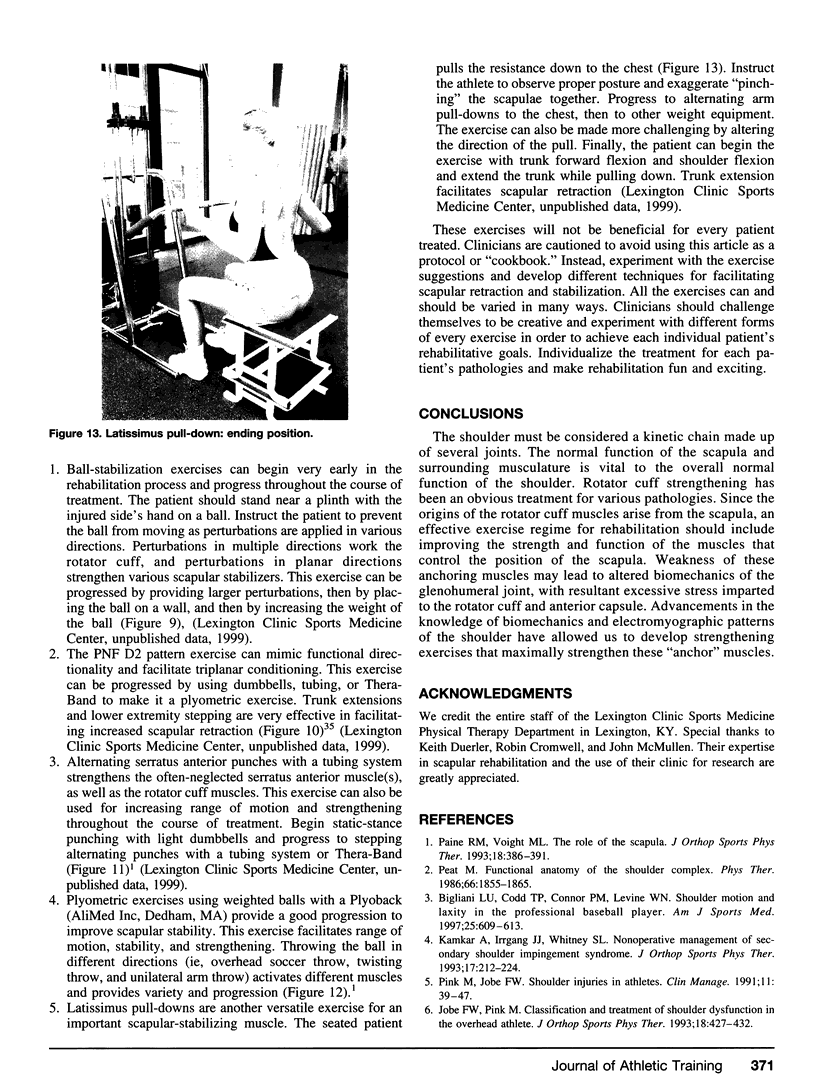
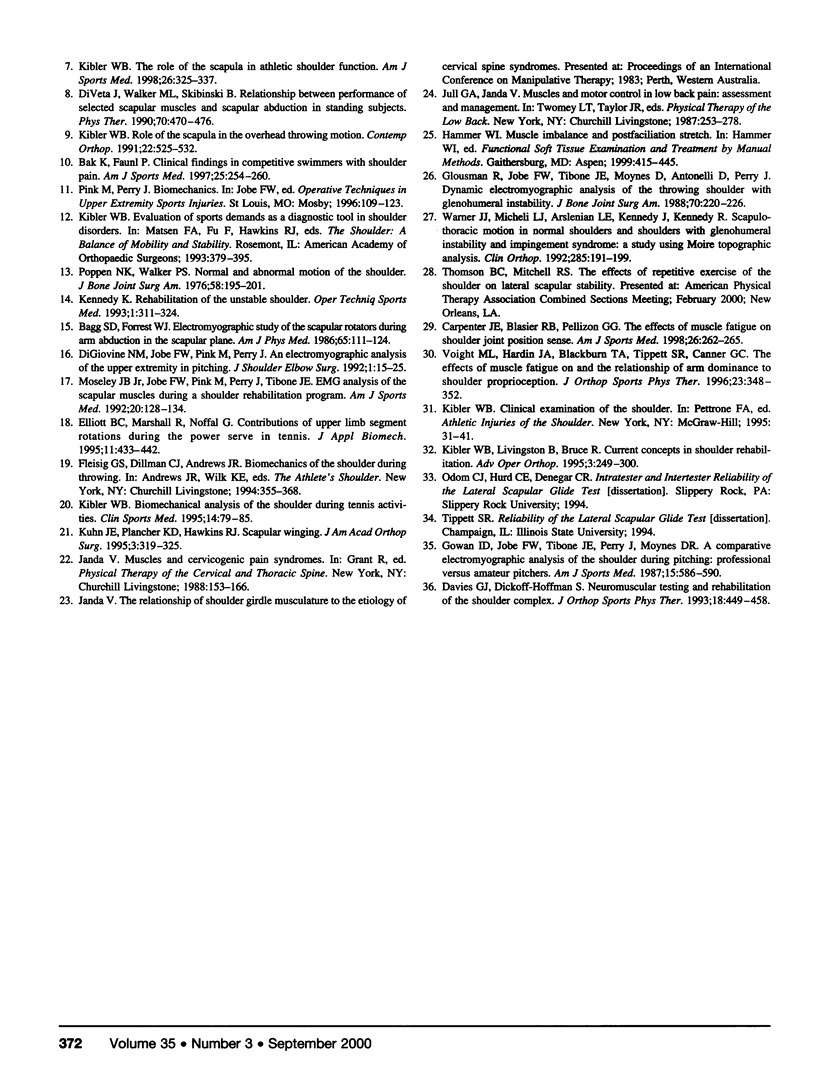
Images in this article
Selected References
These references are in PubMed. This may not be the complete list of references from this article.
- Bagg S. D., Forrest W. J. Electromyographic study of the scapular rotators during arm abduction in the scapular plane. Am J Phys Med. 1986 Jun;65(3):111–124. [PubMed] [Google Scholar]
- Bak K., Faunø P. Clinical findings in competitive swimmers with shoulder pain. Am J Sports Med. 1997 Mar-Apr;25(2):254–260. doi: 10.1177/036354659702500221. [DOI] [PubMed] [Google Scholar]
- Bigliani L. U., Codd T. P., Connor P. M., Levine W. N., Littlefield M. A., Hershon S. J. Shoulder motion and laxity in the professional baseball player. Am J Sports Med. 1997 Sep-Oct;25(5):609–613. doi: 10.1177/036354659702500504. [DOI] [PubMed] [Google Scholar]
- Carpenter J. E., Blasier R. B., Pellizzon G. G. The effects of muscle fatigue on shoulder joint position sense. Am J Sports Med. 1998 Mar-Apr;26(2):262–265. doi: 10.1177/03635465980260021701. [DOI] [PubMed] [Google Scholar]
- Davies G. J., Dickoff-Hoffman S. Neuromuscular testing and rehabilitation of the shoulder complex. J Orthop Sports Phys Ther. 1993 Aug;18(2):449–458. doi: 10.2519/jospt.1993.18.2.449. [DOI] [PubMed] [Google Scholar]
- DiVeta J., Walker M. L., Skibinski B. Relationship between performance of selected scapular muscles and scapular abduction in standing subjects. Phys Ther. 1990 Aug;70(8):470–479. doi: 10.1093/ptj/70.8.470. [DOI] [PubMed] [Google Scholar]
- Glousman R., Jobe F., Tibone J., Moynes D., Antonelli D., Perry J. Dynamic electromyographic analysis of the throwing shoulder with glenohumeral instability. J Bone Joint Surg Am. 1988 Feb;70(2):220–226. [PubMed] [Google Scholar]
- Gowan I. D., Jobe F. W., Tibone J. E., Perry J., Moynes D. R. A comparative electromyographic analysis of the shoulder during pitching. Professional versus amateur pitchers. Am J Sports Med. 1987 Nov-Dec;15(6):586–590. doi: 10.1177/036354658701500611. [DOI] [PubMed] [Google Scholar]
- Jobe F. W., Pink M. Classification and treatment of shoulder dysfunction in the overhead athlete. J Orthop Sports Phys Ther. 1993 Aug;18(2):427–432. doi: 10.2519/jospt.1993.18.2.427. [DOI] [PubMed] [Google Scholar]
- Kamkar A., Irrgang J. J., Whitney S. L. Nonoperative management of secondary shoulder impingement syndrome. J Orthop Sports Phys Ther. 1993 May;17(5):212–224. doi: 10.2519/jospt.1993.17.5.212. [DOI] [PubMed] [Google Scholar]
- Kibler W. B. Biomechanical analysis of the shoulder during tennis activities. Clin Sports Med. 1995 Jan;14(1):79–85. [PubMed] [Google Scholar]
- Kibler W. B. The role of the scapula in athletic shoulder function. Am J Sports Med. 1998 Mar-Apr;26(2):325–337. doi: 10.1177/03635465980260022801. [DOI] [PubMed] [Google Scholar]
- Kuhn JE, Plancher KD, Hawkins RJ. Scapular Winging. J Am Acad Orthop Surg. 1995 Nov;3(6):319–325. doi: 10.5435/00124635-199511000-00002. [DOI] [PubMed] [Google Scholar]
- McMahon P. J., Jobe F. W., Pink M. M., Brault J. R., Perry J. Comparative electromyographic analysis of shoulder muscles during planar motions: anterior glenohumeral instability versus normal. J Shoulder Elbow Surg. 1996 Mar-Apr;5(2 Pt 1):118–123. doi: 10.1016/s1058-2746(96)80006-1. [DOI] [PubMed] [Google Scholar]
- Moseley J. B., Jr, Jobe F. W., Pink M., Perry J., Tibone J. EMG analysis of the scapular muscles during a shoulder rehabilitation program. Am J Sports Med. 1992 Mar-Apr;20(2):128–134. doi: 10.1177/036354659202000206. [DOI] [PubMed] [Google Scholar]
- Paine R. M., Voight M. The role of the scapula. J Orthop Sports Phys Ther. 1993 Jul;18(1):386–391. doi: 10.2519/jospt.1993.18.1.386. [DOI] [PubMed] [Google Scholar]
- Peat M. Functional anatomy of the shoulder complex. Phys Ther. 1986 Dec;66(12):1855–1865. doi: 10.1093/ptj/66.12.1855. [DOI] [PubMed] [Google Scholar]
- Poppen N. K., Walker P. S. Normal and abnormal motion of the shoulder. J Bone Joint Surg Am. 1976 Mar;58(2):195–201. [PubMed] [Google Scholar]
- Voight M. L., Hardin J. A., Blackburn T. A., Tippett S., Canner G. C. The effects of muscle fatigue on and the relationship of arm dominance to shoulder proprioception. J Orthop Sports Phys Ther. 1996 Jun;23(6):348–352. doi: 10.2519/jospt.1996.23.6.348. [DOI] [PubMed] [Google Scholar]
- Warner J. J., Micheli L. J., Arslanian L. E., Kennedy J., Kennedy R. Scapulothoracic motion in normal shoulders and shoulders with glenohumeral instability and impingement syndrome. A study using Moiré topographic analysis. Clin Orthop Relat Res. 1992 Dec;(285):191–199. [PubMed] [Google Scholar]



